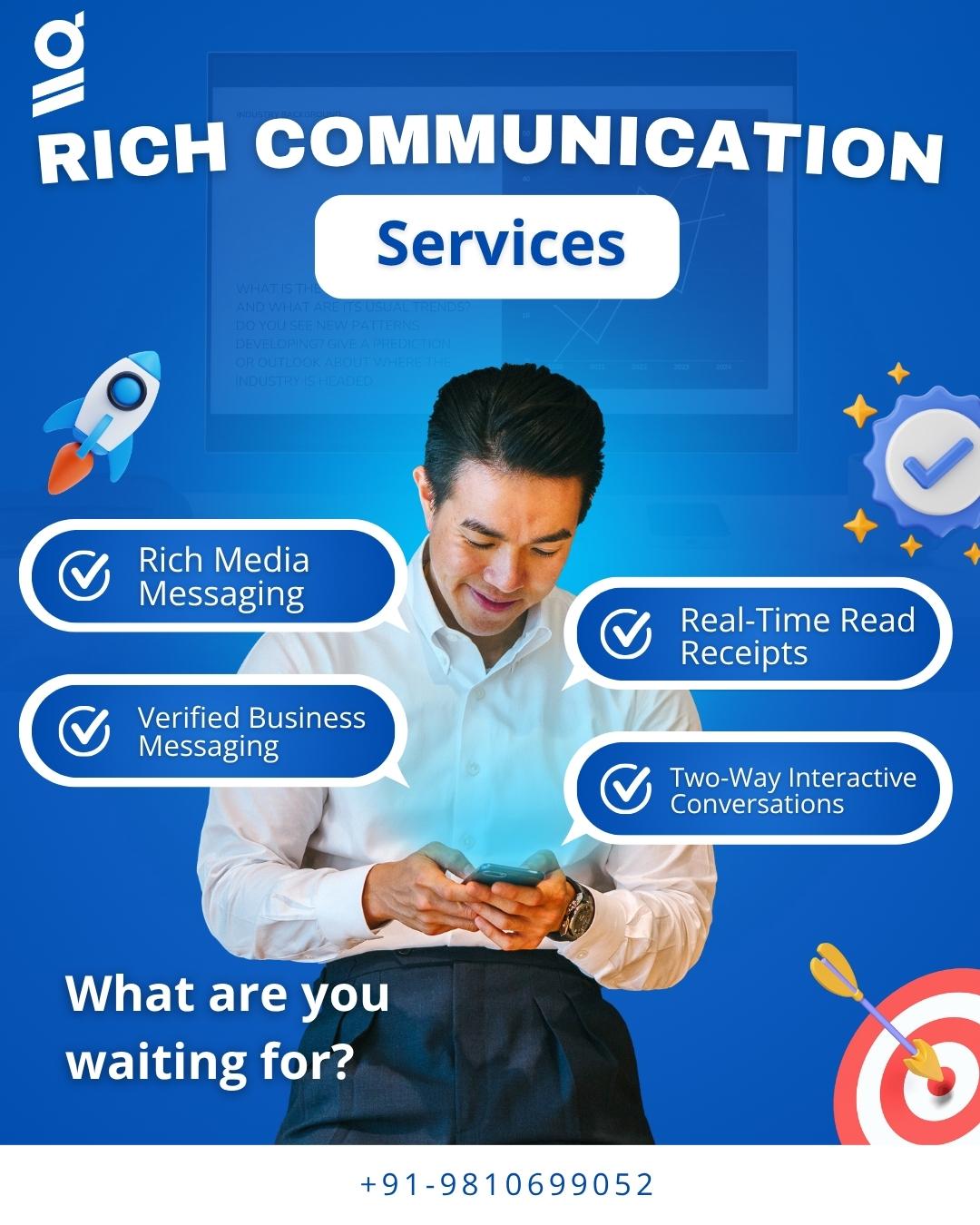In today’s digital-first world, businesses are constantly seeking better ways to connect with customers. Traditional SMS has been reliable for decades, but its limitations—such as plain text and character restrictions—make it less effective in a time when consumers expect rich, interactive communication. This is where RCS (Rich Communication Services) marketing comes in, offering brands a modern, feature-rich way to engage customers through their mobile devices.
What is RCS Marketing?
RCS marketing refers to using Rich Communication Services to promote products, deliver updates, and create interactive customer experiences. Unlike SMS, RCS allows brands to send messages with images, videos, carousels, buttons, QR codes, and even payment options—all within the default messaging app on Android phones.
In short, RCS transforms simple text messages into mini customer engagement platforms, making marketing more engaging, conversational, and results-driven.
Why RCS is Changing the Marketing Game
- Rich Media Messaging
Businesses can showcase products using high-quality visuals, GIFs, and videos rather than relying on plain text. - Interactive Elements
Call-to-action buttons, quick replies, and carousels make it easy for customers to browse, buy, or engage directly from the message. - Branded Messaging
Verified sender IDs and logos boost trust and help customers distinguish legitimate brands from spam. - Personalized Campaigns
Messages can be tailored based on customer preferences, past purchases, or geographic location. - Analytics & Tracking
Unlike SMS, RCS provides delivery receipts, read receipts, and interaction tracking—helping marketers measure success more accurately.
Benefits of RCS Marketing
- Higher Engagement – Interactive messages lead to better click-through rates compared to SMS.
- Stronger Brand Trust – Verified business profiles reduce the risk of fraud and spam.
- Improved Conversions – Integrated buttons and payments simplify the purchase journey.
- Cost-Effective – Delivers better ROI by combining marketing and customer service in one channel.
- Omnichannel Experience – Works alongside email, WhatsApp, and social media for a consistent brand presence.
Use Cases of RCS in Marketing
- Retail & E-commerce
- Showcase product catalogs with images and prices.
- Send promotional offers with “Buy Now” buttons.
- Share boarding passes, hotel check-ins, and itinerary updates.
- Offer upgrades or add-ons with a single tap.
- Deliver account updates and personalized offers.
- Enable secure transactions directly within the chat.
- Share menus with clickable ordering options.
- Send delivery updates with real-time tracking.
- Sell tickets with seat selection through carousels.
- Share reminders, coupons, or exclusive access passes.
Example of RCS Marketing in Action
Imagine a clothing brand launching a new collection. Instead of sending a plain SMS that reads:
"New arrivals are here. Visit our store today!"
With RCS marketing, the brand can send a message like:
- A carousel of images showcasing the latest outfits.
- Buttons such as “Shop Now”, “Find a Store”, or “Get 20% Off”.
- A verified brand logo, ensuring trust.
- Real-time stock availability for popular items.
The customer doesn’t need to open a website or app—the purchase journey begins directly within the message.
Challenges in RCS Marketing
While RCS marketing is promising, businesses must navigate certain challenges:
- Limited Availability – RCS is supported on Android, but not all carriers or devices have adopted it yet.
- Apple iMessage Gap – iPhone users cannot currently receive RCS messages, limiting reach.
- Regulatory Compliance – As with SMS, businesses must follow data privacy and opt-in rules.
- Adoption Costs – Creating rich campaigns may require more investment compared to simple SMS.
Despite these hurdles, adoption is growing rapidly, and as more mobile carriers support RCS, the audience will expand globally.
Best Practices for Effective RCS Marketing
- Combine with SMS – Use fallback options so iPhone or non-RCS users still get plain-text messages.
- Keep it Simple – Avoid overloading messages; focus on clear CTAs.
- Personalize Campaigns – Segment audiences and tailor offers to improve relevance.
- Ensure Compliance – Always get customer opt-in before sending campaigns.
- Measure & Optimize – Track engagement metrics to refine future campaigns.
The Future of RCS Marketing
RCS is set to become a mainstream marketing tool as telecom operators and tech companies push for its adoption. Google has already made RCS the default for Android Messages, and there are ongoing discussions about cross-platform compatibility.
Looking ahead, RCS will merge with technologies like AI, chatbots, and mobile payments, creating an ecosystem where marketing, customer service, and transactions happen seamlessly in one place.
Final Thoughts
RCS marketing represents the evolution of mobile messaging, moving beyond text to create immersive, interactive, and trustworthy brand interactions. For businesses, it offers a powerful way to reach customers with content that captures attention, encourages engagement, and drives action—all within the messaging app they already use.
As adoption grows, RCS will play a central role in how brands build stronger customer relationships and deliver personalized experiences in the digital era.

